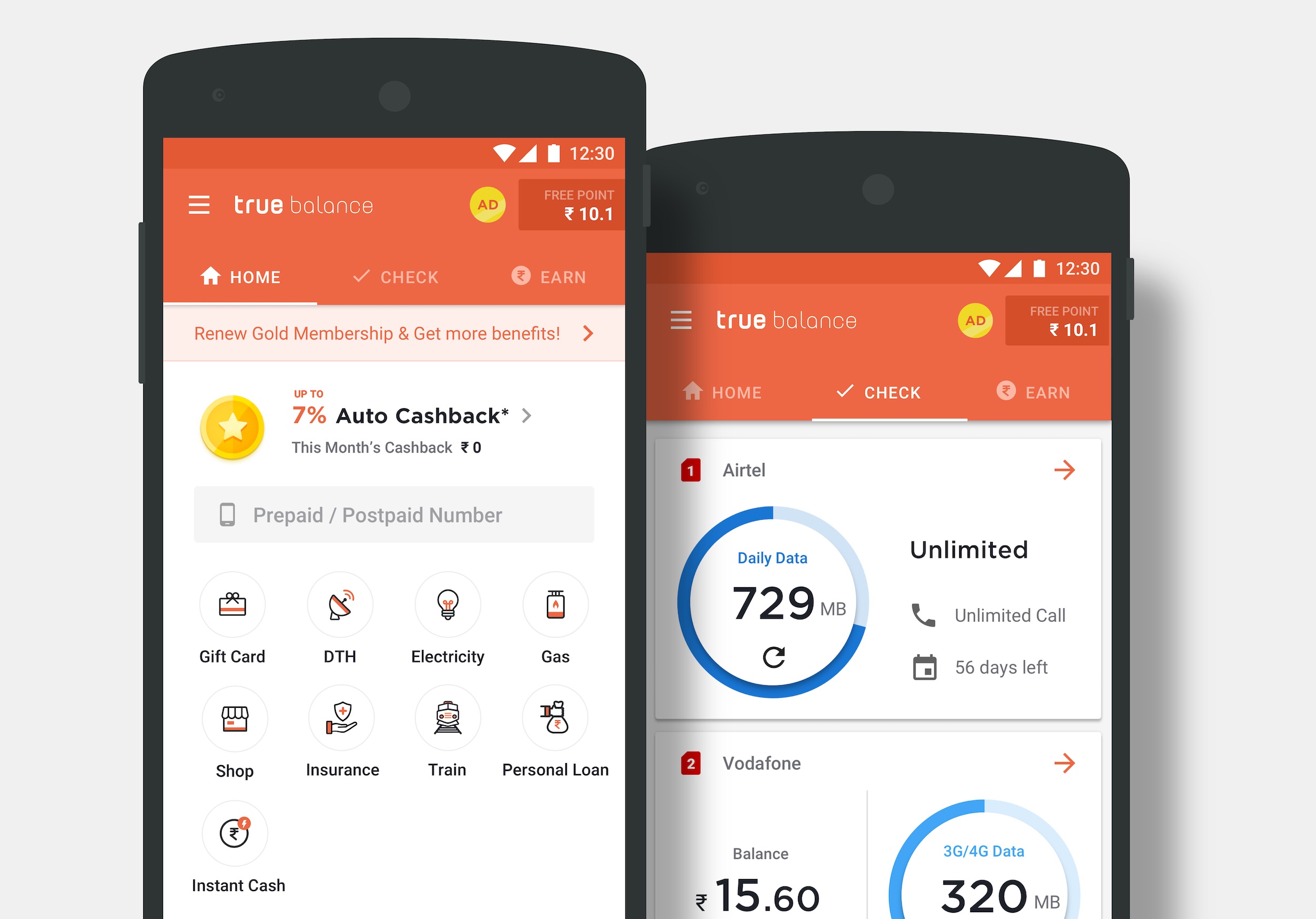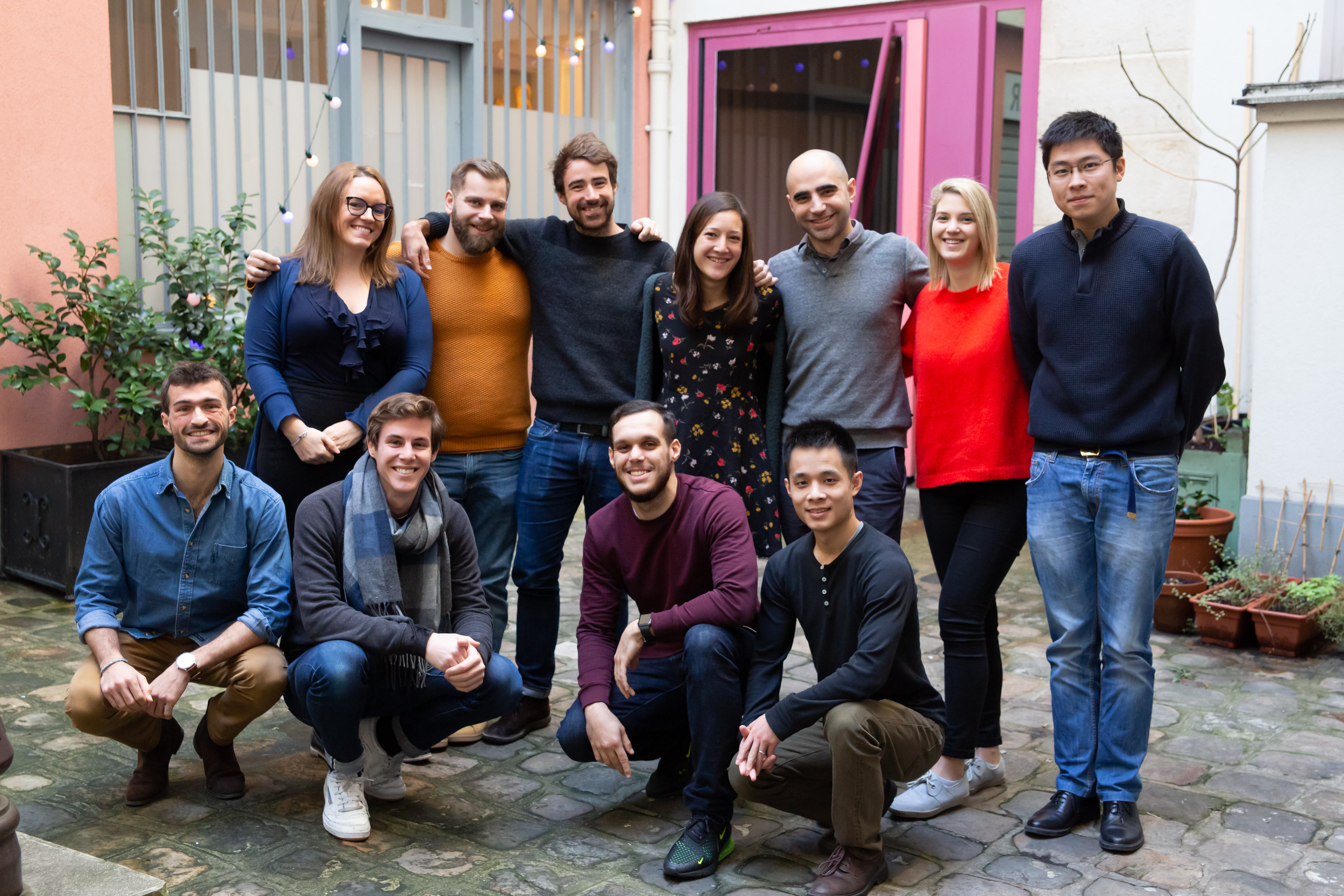Apps
Auto Added by WPeMatico
Auto Added by WPeMatico
Popular messaging app Kik is, indeed, “here to stay” following an acquisition by the Los Angeles-based multimedia holding company, MediaLab.
It echoes the same message from Kik’s chief executive Tim Livingston last week when he rebuffed earlier reports that the company would shut down amid an ongoing battle with the U.S. Securities and Exchange Commission. Livingston had tweeted that Kik had signed a letter-of-intent with a “great company,” but that it was “not a done deal.”
Now we know the the company: MediaLab. In a post on Kik’s blog on Friday the MediaLab said that it has “finalized an agreement” to acquire Kik Messenger.
“Kik is one of those amazing places that brings us back to those early aspirations,” the blog post read. “Whether it be a passion for an obscure manga or your favorite football team, Kik has shown an incredible ability to provide a platform for new friendships to be forged through your mobile phone.”
MediaLab is a holding company that owns several other mobile properties, including anonymous social network Whisper and mixtape app DatPiff. In acquiring Kik, the holding company is expanding its mobile app portfolio.
MediaLab said it has “some ideas” for developing Kik going forwards, including making the app faster and reducing the amount of unwanted messages and spam bots. The company said it will introduce ads “over the coming weeks” in order to “cover our expenses” of running the platform.
Buying the Kik messaging platform adds another social media weapon to the arsenal for MediaLab and its chief executive, Michael Heyward .
Heyward was an early star of the budding Los Angeles startup community with the launch of the anonymous messaging service, Whisper nearly 8 years ago. At the time, the company was one of a clutch of anonymous apps — including Secret and YikYak — that raised tens of millions of dollars to offer online iterations of the confessional journal, the burn book, and the bathroom wall (respectively).
In 2017, TechCrunch reported that Whisper underwent significant layoffs to stave off collapse and put the company on a path to profitability.
At the time Whisper had roughly 20 million monthly active users across its app and website, which the company was looking to monetize through programmatic advertising, rather than brand-sponsored campaigns that had provided some of the company’s revenue in the past. Through widgets, the company had an additional 10 million viewers of its content per-month using various widgets and a reach of around 250 million through Facebook and other social networks on which it published posts.
People familiar with the company said at the time that it was seeing gross revenues of roughly $1 million and was going to hit $12.5 million in revenue for that calendar year. By 2018 that revenue was expected to top $30 million, according to sources at the time.
The flagship Whisper app let people post short bits of anonymous text and images that other folks could like or comment about. Heyward intended it to be a way for people to share more personal and intimate details — to be a social network for confessions and support rather than harassment.
The idea caught on with investors and Whisper managed to raise $61 million from investors including Sequoia, Lightspeed Venture Partners, and Shasta Ventures . Whisper’s last round was a $36 million Series C back in 2014.
Fast forward to 2018 when Secret had been shut down for three years while YikYak also went bust — selling off its engineering team to Square for around $1 million. Whisper, meanwhile, seemingly set up MediaLab as a holding company for its app and additional assets that Heyward would look to roll up. The company filed registration documents in California in June 2018.
According to the filings, Susan Stone, a partner with the investment firm Sierra Wasatch Capital, is listed as a director for the company.
Heyward did not respond to a request for comment.
Zack Whittaker contributed reporting for this article.
Powered by WPeMatico
What do BMW, Tencent, Pokémon Go creator Niantic, movie director Jon Favreau and construction giant Skanska have in common? They’re all using the same platform to create their products.
Founded in a small Copenhagen apartment in 2004, Unity Technologies’ makes a game engine — a software platform for building video games. But the company, which was recently valued around $6 billion and could be headed toward an IPO, is becoming much more than that.
“Unity wants to be the 3D operating system of the world,” says Sylvio Drouin, VP of the Unity Labs R&D team.
Customers can design, buy, or import digital assets like forests, sound effects, and aliens and create the logic guiding how all these elements interact with players. Nearly half of the world’s games are built with Unity, which is particularly popular among mobile game developers.
And in the fourteen years since Unity’s engine launched, the size of the global gaming market has exploded from $27 billion to $135 billion, driven by the rise of mobile gaming, which now comprises the majority of the market.
Unity is increasingly used for 3D design and simulations across other industries like film, automotive, and architecture and is now used to create 60% of all augmented and virtual reality experiences. That positions Unity — as Facebook CEO Mark Zuckerburg argued in a 2015 memo in favor of acquiring it — as a key platform for the next wave of consumer technology after mobile.
Unity’s growth is a case study of Clayton Christensen’s theory of disruptive innovation. While other game engines targeted the big AAA game makers at the top of the console and PC markets, Unity went after independent developers with a less robust product that was better suited to their needs and budget.
As it gained popularity, the company captured growth in frontier market segments and also expanded upmarket to meet the needs of higher-performance game makers. Today, it’s making a push to become the top engine for building anything in interactive 3D.
This article is part of my ongoing research into the future of interactive media experiences. This research has included interviews with dozens of developers, executives, and investors in gaming and other industries, including interviews with over 20 Unity executives.
Unity was founded in Copenhagen by Nicholas Francis, Joachim Ante, and David Helgason. Its story began on an OpenGL forum in May 2002, where Francis posted a call for collaborators on an open source shader-compiler (graphics tool) for the niche population of Mac-based game developers like himself. It was Ante, then a high school student in Berlin, who responded.
Ante complemented Francis’ focus on graphics and gameplay with an intuitive sense for back-end architecture. Because the game he was working on with another team wasn’t going anywhere, they collaborated on the shader part-time while each pursued their own game engine projects, but decided to combine forces upon meeting in-person. In a sprint to merge the codebases of their engines, they camped out in Helgason’s apartment for several days while he was out of town. The plan was to start a game studio grounded in robust tech infrastructure that could be licensed as well.
Helgason and Francis had worked together since high school, working on various web development ventures and even short-lived attempts at film production. Helgason dropped in and out of the University of Copenhagen while working as a freelance web developer. He provided help where he could and joined full-time after several months, selling his small stake in a web development firm to his partners.
According to Ante, Helgason was “good with people” and more business-oriented, so he took the CEO title after the trio failed to find a more experienced person for the role. (It would be two years before Ante and Francis extended the co-founder title and a corresponding amount of equity to Helgason.)
They recruited a rotating cast to help them for free while prototyping a wide range of ideas. The diversity of ideas they pursued resulted in an engine that could handle a broad range of use cases. Commercializing the engine became a focus, as was coming up with a hit game that would show the engine off to its best advantage; for indie developers, having to reconstruct an engine with every new game idea was a pain point that, if solved, would enable more creative output.
Supported by their savings, a €25,000 investment from Ante’s father, and Helgason’s part-time job at a café, they pressed on for three years, incorporating in the second year (2004) with the name Over The Edge Entertainment.
The game they ultimately committed to launching in spring 2005, GooBall, was “way too hard to play,” says Ante and didn’t gain much traction. Recognizing that they were better at building development tools and prototypes than commercially-viable games, they bet their company on the goal of releasing a game engine for the small Mac-based developer community. Linking the connotations of collaboration and cross-compatibility, they named the engine Unity.
Powered by WPeMatico
Since it was founded by journalist Jessica Lessin in 2013, The Information has stood out in the tech news landscape for its focus on an ad-free, subscription-driven business model (a focus that seems increasingly prescient).
Now, the upcoming launch of an app called Ticker suggests that the company is looking to expand its audience while maintaining that subscription model.
The Information describes Ticker as its first consumer app. The assumption is that anyone who’s currently paying the $399 annual fee for an Information subscription needs it for their job — whether they’re an investor, entrepreneur or some other professional in the tech industry.
The new app, meanwhile, is designed for anyone who might be interested in keeping up-to-date with the latest tech news, and it’s priced much more affordably, at $29 per year. (Information subscribers will get access as well.)

Apparently the app was inspired by the Briefing section of The Information website, which offers quick summaries (often drawn from reporting by other publications) of major tech news.
Ticker, meanwhile, will include a section called Today with summaries of the day’s tech headlines — similar to Briefing, but written for a consumer audience. It will also include a calendar highlighting upcoming IPOs, conferences and other events that readers might want to know about. (Not included: The Information’s full articles and original reporting.)
“More and more, we’ve been hearing from readers who don’t have a business reason to follow tech but are finding it more and more central to their lives,” Lessin said in a statement. “We are launching Ticker for them — giving them access to the best summaries of the most significant news, written by our team at The Information.”
The company plans to launch Ticker later this fall. In the meantime, you can sign up here.
Powered by WPeMatico
As handset makers continue to work on ways of making smartphones more streamlined and sleek, while at the same time introducing new features that will get people buying more devices, a startup that is pioneering something called “software-defined” surfaces — essentially, using ultrasound and AI to turn any kind of material, and any kind of surface, into one that will respond to gestures, touch and other forces — is setting out its stall to help them and other hardware makers change up the game.
Sentons, the startup out of Silicon Valley that is building software-defined surface technology, is today announcing the launch of SurfaceWave, a processor and accompanying gesture engine that can be used in smartphones and other hardware to create virtual wheels and buttons to control and navigate apps and features on the devices themselves. The SurfaceWave processor and engine are available to “any mobile manufacturer.”
Before this, Sentons had already inked direct deals to test market interest in its technology. There were already three smartphones released — two of which were only sold in Asia (models and customer names undisclosed by Sentons) and one of which is made by Asus in partnership with Tencent, the Republic of Gamers phone (the Air Triggers are powered by Sentons). Jess Lee, the company’s CEO, told me in an interview that there are another 10-12 devices “in process” right now due to be released in coming cycles. He would not comment on whether his former employer is one of them.
Sentons has been around since 2011, but very much under the radar until this year, when it announced that Lee — who had been at Apple, after his previous company, the cutting-edge imaging startup InVisage, was acquired by the iPhone maker — was coming on as CEO.
The company has quietly raised about $35 million from two investors; NEA and Lee confirmed to me that it’s currently raising another, probably larger, round. (Given the company’s partnership with Tencent and Asus, those are two companies I would think are candidates as strategic investors.)
Sentons’ core idea is focused around sound — specifically ultra sound.
 Its system is based around a processor that emits ultrasonic “pings” (similar to sonar array, the company says, which is used for example on submarines to navigate and communicate) to detect physical movement and force on the surface of an object. The company says that this technique is much more sophisticated than capacitive touch that has been used on smartphones up to now, because combined with Sentons’ algorithms it can measure force and intent as well as touch.
Its system is based around a processor that emits ultrasonic “pings” (similar to sonar array, the company says, which is used for example on submarines to navigate and communicate) to detect physical movement and force on the surface of an object. The company says that this technique is much more sophisticated than capacitive touch that has been used on smartphones up to now, because combined with Sentons’ algorithms it can measure force and intent as well as touch.
Combined with the processor that emits the pings and houses the gesture engine, Sentons also uses “sensor modules” around the perimeter of a device to detect when those pings are interrupted. The system trains itself and can adjust both to temporal “buttons” and also other unintended things like when a screen cracks and your gestures move over to a different area of the phone.
 Gaming — the main use case for Asus’s ROG phone — is an obvious category ripe for software-defined surfaces. The medium always strives for more immersive experiences, and as more games are either natively made for phones, or ported there because of the popularity of mobile gaming, handset makers and publishers are always trying to come up with ways to enhance what is, ultimately, very limited real estate (even with larger screens). Using any and all parts of a device to experience motion and other physical responses, and to control the game, is a natural fit for what Sentons has built.
Gaming — the main use case for Asus’s ROG phone — is an obvious category ripe for software-defined surfaces. The medium always strives for more immersive experiences, and as more games are either natively made for phones, or ported there because of the popularity of mobile gaming, handset makers and publishers are always trying to come up with ways to enhance what is, ultimately, very limited real estate (even with larger screens). Using any and all parts of a device to experience motion and other physical responses, and to control the game, is a natural fit for what Sentons has built.
But the bigger picture and longer-term goal is to apply Sentons’ technology for other uses on devices — photography and building enhanced camera tools is one obvious example — and on other “hardware,” like connected cars, clothes and even the human body, as Sentons’ technology can also work on and through human tissue.
“Every surface is an opportunity,” Lee said, noting that conversations around health and medical technology are still very early, while other areas like wearables and automotive are seeing “engagement” already. “In the cabin of a vehicle, you have a wealth of tactile materials, whether it’s leather dashboards or metal buttons, and all of those are extremely interesting to us,” he added.
At the same time, the more immediate opportunity for Sentons is the mobile industry.
Smartphone sales have slowed down, and for some vendors declined, in recent years; and while some of that might have to do with premium device prices continuing to climb, and much higher smartphone penetration globally, some have laid the blame in part on a lack of innovation. Specifically, newer phones are just not providing enough “must have” new features to merit making a purchase of a new device if you already have one.
You could argue that making a technology like this widely available and open to all comers might make those who are trying to make their devices stand out with special features less inclined to jump on the bandwagon.
“Yes, you could say there is more value in scarcity, an approach we took in the last company,” Lee said, referring to InVisage and how very under the radar it was before being snapped up by Apple.
However, he thinks a different approach is needed here. “Whether we launched this platform to everyone or not, the gates have opened, the piñata has broken, and we see a lot more opportunities and want to go for them,” he said.
“You can call it a multi-pronged approach,” he continued, “but ensuring the adoption of software-defined interactions [by trying to work with as many companies as possible] gets the technology or use out there quickly.” He noted that when a new gesture is introduced on devices, it can take time for the world to absorb it, “and we are positive there will be followers, perhaps with different technology, that will compete with us, so a broad launch is what we are going for.”
Powered by WPeMatico
MyGate, a Bangalore-based startup that offers security management and convenience service for guard-gated premises, said today it has bagged more than $50 million in a new financing round as it looks to expand its footprint in the nation.
Chinese internet giant Tencent, Tiger Global, JS Capital and existing investor Prime Venture Partners funded the three-year-old startup’s $56 million Series B financing round. The new round pushes MyGate’s total fundraise to $67.5 million.
MyGate offers an eponymous mobile app that allows home residents to approve entries and exits, communicate with their neighbors, log attendance and pay society maintenance bills and daily help workers.
The startup says it is operational in 11 cities in India and has amassed over 1.2 million home customers. Its customer base is increasing by 20% each month, it claimed. The service is handling 60,000 requests each minute and clocking over 45 million check-in requests each month.
The idea of MyGate came after its co-founder and CEO, Vijay Arisetty, left the Indian armed force. In an interview with TechCrunch, he said his family was appalled to learn about the poor state of security across societies in India.
“This was also when e-commerce companies and food delivery firms were beginning to gain strong foothold in the nation. This meant that many people were entering a gated community each day,” he said.
MyGate has inked partnerships with many e-commerce players to create a system to offer a silent and secure delivery experience for its users. The startup also trains guards to understand the system.
According to industry estimates, more than 4.5 million people in India today live in gated communities, and that figure is growing by 13% each year. The private security industry in the country is a $15 billion market.
Arisetty says he believes the startup could significantly accelerate its growth as its solution understands the price-sensitive market. Using MyGate costs an apartment about Rs 20 (28 cents) per month. Even at that price, the startup says it is making a profit. “Today, we are seeing more demand than we can handle,” he said.
That’s where the new funding would come into play for the startup, which today employs about 700 people.
The startup plans to use the fresh capital to expand its technology infrastructure, its marketing and operations teams and build new features. The startup aims to reach 15 million homes in 40 Indian cities in the next 18 months.
In a statement, Sanjay Swamy, managing partner at Prime Venture Partners, said, “It’s been great to see a fledgling startup execute consistently and holistically, and grow into a category-creating market-leader.”
Powered by WPeMatico
DoNotPay helps you get out of parking tickets and cancel forgotten subscriptions, and now it can call you when it’s your turn in a customer service phone queue. The app today is launching “Skip Waiting On Hold.” Just type in the company you need to talk to, and DoNotPay calls for you using tricks to get a human on the line quickly. Then it calls you back and connects you to the agent so you never have to listen to that annoying hold music.
And in case the company tries to jerk you around or screw you over, the DoNotPay app lets you instantly share to social media a legal recording of the call to shame them.

Skip Waiting On Hold comes as part of the $3 per month DoNotPay suite of services designed to save people time and money by battling bureaucracy on their behalf. It can handle DMV paperwork for you, write legal letters to scare businesses out of overcharging you and it provides a credit card that automatically cancels subscriptions when your free trial ends.
“I think the world would be a lot fairer place if people had someone fighting for them” says DoNotPay’s 22-year-old founder Joshua Browder. Indeed; $3 per month gets the iOS app‘s 10,000 customers unlimited access to all the features with no extra fees or commissions on money saved. “If DoNotPay takes a commission then we have an incentive to perpetuate the problems we are fighting against.”
Browder comes from a family of activists. His father Bill Browder got the Magnitsky Act passed, which lets the U.S. government freeze the foreign assets and visas of human rights abusers. It’s named after Bill’s Russian lawyer who was murdered in Moscow after uncovering a $230 million government corruption scheme linked to President Putin’s underlings.

“These big companies [and governments] are getting away with a lot,” Browder tells me. He hit a breaking point when frustrated with the process of appealing parking tickets. He built DoNotPay to cut through hassles designed to separate us from our money. In April it raised a $3.5 million seed round led by Felicis to develop an Android version after picking up early funding from Andreessen Horowitz. Surprisingly, the startup has never been sued.
For Skip Waiting On Hold, DoNotPay built out a database of priority and VIP customer service numbers for tons of companies. For legality, if you opt in to recording the exchanges, the app automatically plays a message informing both parties they’ll be recorded. A human voice detection system hears when a real agent picks up the phone, and then rings your phone. It’s like having customer service call you.
Not only can DoNotPay help you get in touch about cancelling subscriptions, scoring refunds or retrieving information, it’s like “a body camera for customer service calls,” Browder says. “Before they make a decision that rips off the customer, they’ll think ‘this could be made public and go viral and hurt our business.’ ” For example, an airline that jacks up prices for rescheduled flights surrounding hurricanes could be shamed for profiting off of natural disasters.

The full list of DoNotPay services includes:
Browder hopes that with time, companies and governments will make all these chores easier for everyone. To avoid putting itself out of a job, DoNotPay is constantly looking for new annoyances to eliminate. “I’m from the U.K. America seems to be a pay-to-play society. The more money you have, the more rights you have,” Browder concludes. But those rights could be restored for all by building a robot lawyer that’s affordable to everyone.
Powered by WPeMatico
South Korean startup True Balance, which operates an eponymous financial services app aimed at tens of millions of users in small cities and towns in India, has closed a new financing round as it looks to court more first-time users in the world’s second largest internet market.
True Balance said on Tuesday that it has raised $23 million in its Series C financing round from seven Korean investors — NH Investment & Securities, IBK Capital, D3 Jubilee Partners, SB Partners, Shinhan Capital and existing partners IMM Investment and HB Investment.
TechCrunch reported earlier this year that True Balance — which has raised $65 million to date, including the $38 million that it closed in its previous financing round — was looking to raise as much as $70 million in its Series C round.
True Balance began its life as a tool to help users easily find their mobile balance, or top up pre-pay mobile credit. But in its four-year journey, its ambition has significantly grown beyond that. Today, it serves as a digital wallet app that helps users pay their mobile and electricity bills, and offer credit to customers so that they can pay later for their digital purchases.

The startup says it has amassed more than 60 million registered users in India, most of whom live in small cities and towns — or dubbed India 2 and India 3. Most of these users are coming online for the first time and True Balance says it has an army of local agents — who get certain incentives — to help first-time internet users understand the benefit of online transactions and start using the app.
True Balance says it clocks more than 300,000 digital transactions on its app each day. The startup, which recently introduced e-commerce shopping services on its app to sell products like smartphones, has clocked $100 million in GMV sales in the country to date.
Charlie Lee, founder of True Balance, said the startup will use the fresh capital to bulk up the offerings on the app. Some of the features that True Balance intends to add before the end of this fiscal year include the ability to purchase bus and train tickets, digital gold and book cooking gas cylinders.
True Balance will also expand its lending and e-commerce services, Lee said. Its lending feature was used 1 million times in three months when it was introduced earlier this year. “We aim to strengthen our data and alternative credit scoring strategy to provide better financial services to our target — the next billion Indian users. Our goal is to reach 100 million digital touch points and become one of the top fintech companies in India by 2022,” he added in a statement.
Even as more than 600 million users in India are online today, just about as many remain offline. In recent years, many major companies in India have started to customize their services to appeal to users in India 2 and India 3 — who also have limited financial power.
Powered by WPeMatico
Seoul-based education technology startup Mathpresso announced today that it has raised $14.5 million in Series B funding. The company’s flagship app is Qanda, which provides students with math and science help and tutoring. Participants in the round include Legend Capital, InterVest, NP Investments and Mirae Asset Venture Investment.
This brings Mathpresso’s total funding so far to $21.2 million. Its previous round of funding was a $5.3 million Series A announced at the end of last year.
Mathpresso says Qanda (the name stands for “Q and A”) is currently used by a third of students in South Korea. The app launched in markets including Japan, Vietnam, Indonesia and Singapore last year and now has users in more than 50 countries. Qanda uses AI-based optical character recognition to scan math problems. Students take a photo of a problem and upload it to get instructions for how to solve it from the app or tutors.
In a statement, Legend Capital managing director Joon Sung Park said, “As an early investor of China’s leading mobile education companies such as Zuoyebang and Onion Math, Legend Capital has witnessed robust growth of China’s mobile education market. We strongly believe that Mathpresso has the technological and operation capabilities to expand overseas and grasp new opportunities emerging from the digitization of education, such as offering personalized learning for each student.”
Powered by WPeMatico
After pushing back a planned early-October launch, Samsung has introduced the Android 10 beta of its One UI. The 2.0 version of the Android skin follows a little less than a year after the first version’s beta (released in November 2018). The concept goes counter to the earliest Android overlays, instead intending to create a simpler take on Google’s operating system.
Manufacturers’ longstanding instance on putting their own stamp on Android is understandable — if sometimes misguided. Samsung’s initial stated intention for One UI is to let software and hardware “work together in perfect harmony,” to paraphrase Stevie Wonder.

One UI is largely a success on these fronts. And Samsung is understandably cautious about the rollout, opting again for a public beta version ahead its Android 10 release. “Select” Galaxy S10 owners in the U.S. can sign up for the program starting today, with a final release “in the coming months.” There are a lot of Galaxy phones out there, so the company clearly wants to get the experience right, gathering up user feedback in the process.
Here’s what’s new, per Samsung:
More info on Samsung’s blog.
Powered by WPeMatico
Meet Foodvisor, a startup that has built a mobile app that helps you log everything you eat in order to lose weight, follow a diet or get healthier. You can add data by capturing a photo of your plate before you eat.
“We’ve spent a little over two years doing research and development before we launched the app in 2018 in France,” co-founder and CMO Aurore Tran told me. Foodvisor has raised $1.5 million so far (€1.4 million).
The company is using deep learning to enable image recognition to detect what you’re about to eat. In addition to identifying the type of food, the app tries to estimate the weight of each item.
Foodvisor tries to evaluate the distance between your plate and your phone using camera autofocus data. It then calculates the area of each food item. The company then tries to extrapolate the volume of each item depending on the type of food.
And of course, if Foodvisor got something wrong, you can manually correct it before you log your meal. Many people give up on nutrition trackers because it’s too demanding. Foodvisor’s technology is all about making the data entry process as seamless as possible.
After that, you get a list of nutrition facts about what you just ate — calories, proteins, carbs, fats, fibers, etc. You can then set a goal, log activities and monitor your progress over time.
The startup has managed to attract 1.8 million app downloads already. It is available on iOS and Android in French, English, German and Spanish. “We have adjusted our product, we’ve enriched our database to better target the American market,” Tran said.
It offers a premium subscription for $5 to $10 per month. In addition to more analysis and diet plans, the main feature of the premium plan is that you can chat with a registered dietitian/nutritionist directly in the app. It turns out that artificial intelligence can’t replace real human nutritionists altogether.

Powered by WPeMatico